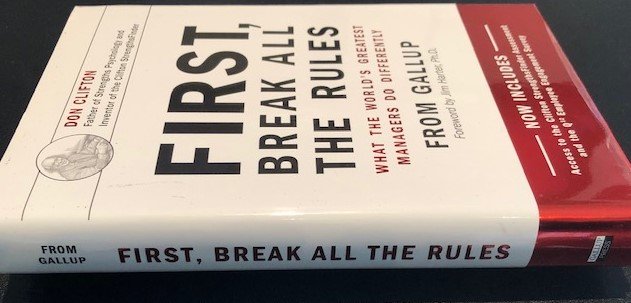Stop guessing and start connecting.
When ever I have the honor of coaching a leader, I’ll often ask a question like ‘what’s one thing that’s most important to you?’ or ‘what is one thing that is most challenging? Inevitably they’ll say something like ‘I just don’t how to motivate my employees’. To know how to motivate your employees, you need to know what is motivating to them. Want to know what motivates your employees? Stop guessing and start connecting.
As a leader today you’ve got more on their plates then ever before: your own deliverable’s, project prime-ships, meetings, customer escalations, endless emails, and coaching virtual teams.
It can be challenging to know how to motivate employees to perform highly and consistently, especially when you’re not there physically.
To motivate your employees, stop guessing and start connecting
Stop Guessing
Now days most leaders realize that not everyone is motivated solely by money. When asking employees to perform a task or adapt to a change we might offer up several benefits such as: ‘you’ll improve your brand’, ‘you’ll advance your career’, ‘you’ll get a promotion’, or ‘you’ll make your bonus’. While any of these might be motivating to someone and they are noble attempts to appeal to an employees values – we’re still just guessing.
Stop Assuming:
One mistake is to assume that others are motivated by the same things you are. Perhaps you like the pressure of growing sales, the challenge of achieving a President’s Award, or the prestige of becoming the “the best.. fill in the blank”. While others may recognize these as important, it may not be what motivates them. For some it may be contributing to a greater purpose, working on a team, or mastering a skill. (See DRIVE by Daniel Pink).
For others it may be about making enough money to provide food and shelter for their children or aging parents. Hows that for a noble cause?
So what can we do?
Here is a practical, powerful way to find out what motivates someone:
Start Connecting
I learned this simple technique from a mentor of mine, Andy Kimball, who has taught this technique to literally thousands of leaders around the world. Connecting1 is about taking time to get to know your employee(s). Whether in a 1-on-1 meeting, on your way to the next sales call, or, wait for it, on a zoom call, it only takes a few minutes to ask someone about themselves.
- What’s one thing you like most about the role you’re in now?
- What seems most challenging about your role?
- Given those challenges, what keeps you coming back every day?
- If you could be doing more of something, what would that be?
- What’s one thing you’re most passionate about in your personal life?
- If you were to look out 5 years, what would put a smile on your face?
- In order to achieve / experience / be … what would you need to learn?
- How can I help?
Notice that these questions are open questions. Open questions tend to get people talking a bit more, and because there are no right answers, they tend to be more disarming than closed questions.
Think of an employee or colleague that you’d like to know more about. What’s one thing you’re curious about? Try framing an open question;
go ahead, I’ll wait ???? _______________________________________________________
It’s easy.
Be Curious

Your job is to listen for what seems most motivating to them. Listen, learn, and stay curious. Listen for things they like, aspire to, dislike or feel challenged by. There’s no pressure on you as you don’t have to have any answers.
Double Click
When someone says, ‘I just want to get ahead’. Instead of saying, “Ya, I know what you mean,” be curious and double click2.
Just like when you hover your mouse over a hyperlink on the computer, what happens when you double click? Yes! It opens up and you get more information. You could ask questions like;
- ‘what’s an example of getting ahead?’ or
- ‘whats important to you about that? or
- ‘can you say a bit more?’.
Here are some more examples:
- “When you say ‘Advance’ your career, what do you mean by advance?”, or
- “When you say more ‘work-life balance,’ what does that look like for you?”, or
- “Sounds like you really want to ‘make an impact’, what’s important to you about that?”
- “When you say it’s ‘challenging working from home now’ why do you say that?”
Listen
Being curious, asking questions and double clicking all help us to gather information. As you listen, listen for words that might hint at their personal values like; making a difference, working on a team, having more autonomy. Also, listen for their tone or notice body language (if you’re in person) – when does their pace get faster or tone go up? When do they seem excited, or frustrated, or unsure? just notice. By the way, executive coaches coach leaders all over the world by phone or video conference.
Confirm your understanding
Once you have a sense of what motivates them, what challenges them, or what goals they have, try floating back what you’ve heard to them to see if you’ve understood. This is a key component of empathetic listening. Not only will the other person feel heard (which is motivating) you can check to see if you’ve understood them correctly.
It might sound something like this: ‘It sounds like one thing you like most about your current role is when you get a complex problem and you’re able to work on it together with your team mates to create a solution. Is that right?’ or,
‘If I understand you correctly, over the next couple of years you’d like to move into a leadership role where you’ll have even more opportunity to coach and mentor others. Is that right?’
It may seem like a formality to ask ‘is that right?’ but it’s important for a couple of reasons;
- It shows the employee that you are sincere in wanting to know them
- It keeps it a 2-way conversation
- It allows you to get confirmation, clarity, or learn more.
Sometimes when I’m confirming understanding, I’ll have an employee or colleague add a bit more, tweak their answer, or out and out change it. I believe this is because sometimes when we hear something reflected back to us, we gain more clarity or realize that’s not quite what we meant. This gives them an opportunity to clarify for themselves as much as us.
Say Thank you
While taking the time to connect with an employee or colleague can build trust, it takes trust for the employee to confide in you and share their goals, aspirations and challenges. It’s a privilege. So say thank you.
It might sound something like this; “Thank you ‘Cody’ . I really appreciate you letting me get to know you a bit better and to understand some of your goals and aspirations. Now I can keep an eye out for opportunities to get you more of what you want…” In your own words of course.
By the way, one powerful question to ask at any point is, ‘how can I help?’. You might get a ‘gee I don’t know but thanks for asking’ or you might get a request. Don’ be afraid to ask this question. It shows your sincere desire to support them, and most people are going to ask for your support in a way that seems to makes sense.
Oh, and remember to follow up. Maybe you have a small project they might like, you saw an article about something they’re interested in, or bare minimum, you can add it to their development plan – you have one right?
Why Connect?
Well for a change, lets start with what is in it for you! The leader.
Remember one of the challenges for many leaders is knowing what motivates their employees? Well now that you know what motivates that employee, you can:
- choose tasks that have those components that are most motivating to them. This what Adrian Gostick and Chester Elton called ‘job sculpting’ in their book What Motivates Me. While every job will have tasks that need to be done whether they’re motivating or not, at least now you can look for opportunities to match when you can.
- When you give an assignment, you can frame it in terms of what’s important to them, how it serves their needs.
- You can pick development opportunities that lead toward their goals.
- You’re more likely to retain that employee.
- Just you spending time with them can be motivating to some.
What’s in it for the employee?
As Don Clifton and Gallup revealed in their book First Break All The Rules, the best leaders in the world treat employees uniquely, not the same. When you connect, the employee is more likely to feel like they matter as I explained in this quick read on motivating others.
“My supervisor or someone at work, seems to care about me as a person”.
“I have the opportunity to do what I do best, every day”.
“In the past year, I have had opportunities at work to learn and grow”. And to some degree
“I have a best friend at work”.

Connecting at a glance
- Frame your intention before connecting. (let the employee know why you’d like to know more about them).
- Protect the time. Whether its 20 minutes or an hour, protect the time in your calendar and don’t let anyone interrupt you.
- Current role. What do they like, not like, challenges, want more of.
- Future state. What would they like to be doing more of, aspire to, or want to achieve long term?
- Be curious – double click
- Listen
- Confirm understanding
- Say thank you
- ask them for feedback (hey, how was this conversation for you?)
- don’t forget to follow up
Just do it
The best way to learn how to connect, is to go do it. Choose an employee or colleague that you’re curious about or want to motivate. Perhaps it’s a high performer and you’re wondering how to keep them motivated. Maybe it’s one of those steady performers and you’re curious what keeps them performing consistently. Maybe it’s someone whose performance is not as consistent and you’re wondering how to help them to the next level.
- Pick one person and start there
- Let them know ahead of time, what you’d like to talk about
- Set a calendar appointment for 20-30 minutes
- Be intentional – be curious and listen for what is important to them
- take notes
- Set an appointment with yourself to follow up, say, 2 weeks later
- take 5 minutes afterward to ask yourself, what worked well? what would you like do differently in the future?
- Now pick another employee and just do it.
*Hint – if you’re feeling hesitant to connect with someone because you haven’t spoken with them in a while – that’s a hint to connect with them!
*Hint #2 – Executive coaches coach people all over the world by phone or video conference. Don’t let someone drop off of your radar because they work from home or work remotely.
Remember, when you connect with someone, you feel good, it builds trust, and you’ll learn more about what motivates your employees.
Finally, you can connect with anyone. Try it with a colleague – imagine how powerful teams can be if all team members were aware of and looking out for each others strengths? Connect with your BOSS. Yes! How many bosses have ever had a direct report take an interest in their goals? Ask them what’s challenging? Asked them how can I help? probably not many.
If you’re looking for leadership techniques that are easy to use and get results, reach out to us at Lidera, it’s what we do.
[1] Andy Kimball – Chief Performance Office, Clearchoice
[2] Andy Kimball. Chief Performance Office, Clearchoice
[3] Adrian Gostick and Chester Elton, The Culture Works.


Great on Matt. For any leader this would be a solid place to build their change program from.
Thanks Hugh. I like the perspective you bring to this on ‘change’.
Change can definitely happen one person at a time, and this is a great place to start.
thanks